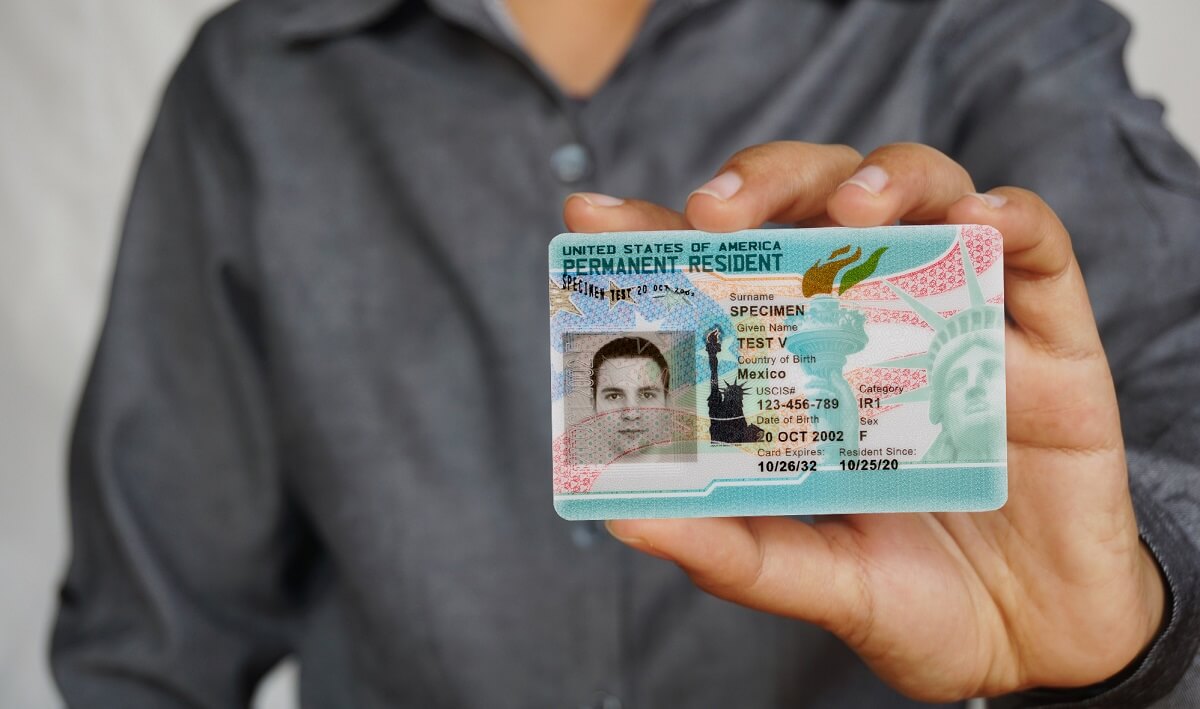Obtaining a U.S. Green Card, which grants lawful permanent residency, involves a detailed process that varies depending on the eligibility category under which you apply. Here’s an overview of the most common pathways to a Green Card:
1. Determine Your Eligibility Category:
There are several paths to obtaining a Green Card, each with specific eligibility criteria:
- **Family-Based Green Cards**: For immediate relatives of U.S. citizens or lawful permanent residents, including spouses, children, parents, and siblings.
- **Employment-Based Green Cards**: For workers in specific job categories or those who have a job offer from a U.S. employer.
- **Diversity Visa (DV) Lottery**: For individuals from countries with low immigration rates to the U.S.
- **Refugee or Asylee Status**: For those granted asylum or refugee status in the U.S.
- **Other Special Categories**: Including Green Cards for victims of human trafficking, crime, abuse, or those under specific government programs.
2. Family-Based Green Card Process:
If applying through a family member, the process typically involves these steps:
**a. U.S. Citizen or Permanent Resident Petitions**
- **Form I-130 (Petition for Alien Relative)**: Filed by the U.S. citizen or lawful permanent resident to establish the qualifying family relationship.
- **Approval**: Once the I-130 petition is approved, it establishes the priority date, which determines when you can apply for a Green Card based on visa availability.
**b. Wait for Visa Availability**
- **Immediate Relatives** (spouses, unmarried children under 21, and parents of U.S. citizens): No wait for a visa; they are immediately available.
- **Other Relatives**: Must wait for a visa to become available according to the Visa Bulletin, which depends on your preference category and country of origin.
**c. Apply for the Green Card**
- **Adjustment of Status (Form I-485)**: If you are in the U.S., you can file this to adjust your status to a Green Card holder.
- **Consular Processing**: If you are outside the U.S., you will apply for an immigrant visa at a U.S. embassy or consulate.
**d. Attend an Interview**
- **Interview**: Attend an interview at a U.S. Citizenship and Immigration Services (USCIS) office or U.S. consulate.
- **Biometrics**: Submit fingerprints, photos, and other required biometric information.
**e. Green Card Issuance**
- If approved, you'll receive your Green Card in the mail or at the U.S. consulate where you applied.
3. Employment-Based Green Card Process:
If applying through a job offer or employment, the process typically involves these steps:
**a. Labor Certification (if required)**
- **PERM Labor Certification**: The employer must obtain a certification from the Department of Labor (DOL) to show there are no qualified U.S. workers for the position.
**b. Employer Files Petition**
- **Form I-140 (Immigrant Petition for Alien Worker)**: Filed by the U.S. employer on your behalf.
**c. Wait for Visa Availability**
- Like family-based Green Cards, employment-based Green Cards are subject to visa caps. Check the Visa Bulletin for your priority date.
**d. Apply for the Green Card**
- **Adjustment of Status (Form I-485)**: If you are in the U.S., you can apply to adjust your status.
- **Consular Processing**: If outside the U.S., apply for an immigrant visa at a U.S. consulate.
**e. Attend an Interview**
- **Interview**: Attend the required interview and submit biometrics.
**f. Green Card Issuance**
- Upon approval, you'll receive your Green Card.
4. Diversity Visa Lottery Process:
The Diversity Visa (DV) Lottery is an annual program:
**a. Submit an Entry**
- **DV Lottery Entry**: Submit your entry online during the open registration period. No fee is required.
**b. Selection**
- If selected, you will be notified and given a ranking number.
**c. Apply for the Green Card**
- **Form DS-260**: Complete the immigrant visa application online.
- **Submit Documents**: Provide required documents like your birth certificate, passport, and police certificates.
**d. Interview and Biometrics**
- **Consular Interview**: Attend an interview at a U.S. consulate.
- **Biometrics**: Submit fingerprints and other biometric data.
**e. Green Card Issuance**
- If approved, receive your immigrant visa and enter the U.S. as a permanent resident.
5. Refugee or Asylee Process:
**a. Refugee or Asylee Status**
- **Asylum Application**: If granted asylum or admitted as a refugee, you may apply for a Green Card after one year.
**b. Apply for Green Card**
- **Form I-485**: Apply to adjust your status to a Green Card holder.
**c. Green Card Issuance**
- Upon approval, receive your Green Card.
6. Special Categories:
**a. Self-Petitioning (e.g., VAWA)**
- Certain individuals, such as those under the Violence Against Women Act (VAWA), can self-petition for a Green Card without needing a sponsor.
**b. Apply for Green Card**
- **Form I-360**: File the petition and then apply for the Green Card.
7. General Steps for All Categories:
**a. Medical Examination**
- Undergo a medical examination by a USCIS-approved doctor.
**b. Background Check**
- Undergo security checks and submit required documents.
**c. Pay Fees**
- Pay the necessary filing and processing fees.
8. Receive the Green Card:
- If your application is approved, you will receive your Green Card, which allows you to live and work permanently in the U.S.
Tips:
- **Stay Informed**: Immigration laws and policies can change, so it’s important to stay up-to-date.
- **Consult an Immigration Attorney**: Consider seeking legal advice to navigate the complex immigration process effectively.
This process can be lengthy and requires careful attention to detail, so patience and preparation are key.









0 Comments